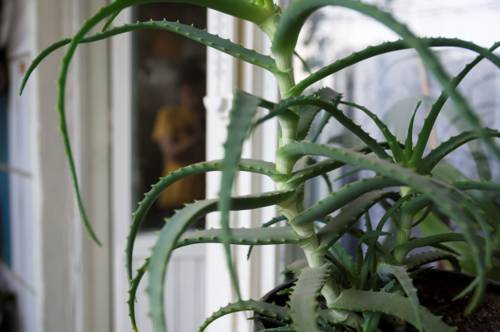
FAQ About Indoor Plant Photography Techniques

What are the best lighting conditions for indoor plant photography?
Natural lighting is ideal for indoor plant photography as it helps to highlight the natural colors and textures of the plants. Position your plants near a window that receives plenty of indirect sunlight. If natural light is not available, consider using artificial lights such as LED grow lights, which can simulate sunlight and bring out vibrant colors in your photos.

How can I compose an aesthetically pleasing plant photo?
Composition is key in plant photography. Use the rule of thirds to place your plant off-center for a more dynamic shot. Consider the background as well, ensuring it is not cluttered and contrasts well with the plant. Incorporating elements like pots, books, or tables can provide context and add interest to the scene.

Which camera settings are optimal for capturing indoor plants?
When photographing indoor plants, try using a low ISO setting to reduce grain, a wide aperture to create a shallow depth of field, and a moderate shutter speed to avoid motion blur. Adjusting white balance can also help in achieving accurate color reproduction. Experiment with these settings to find what works best for your particular environment and plant.

Can I use a smartphone for indoor plant photography?
Absolutely! Modern smartphones come equipped with high-quality cameras capable of capturing stunning plant photos. Use portrait mode to achieve depth of field effects or pro-mode (if available) to manually adjust settings such as ISO and white balance. Always make sure your lens is clean for clearest images.

What are some tips for photographing small plants?
When photographing small plants, getting close and filling the frame can create a more intimate feel. Use a macro lens attachment if available for detailed shots. Ensure good lighting to capture the subtle details and colors of the plant, and try different angles to find the most flattering perspective.

How can I enhance my indoor plant photos using editing software?
Post-processing can enhance your indoor plant photos significantly. Use software like Adobe Lightroom or Snapseed to adjust brightness, contrast, and saturation. Pay attention to color correction to make sure the green tones of the leaves appear natural. Cropping can also help with composition if needed.

What role does background play in plant photography?
The background plays a crucial role in affecting the overall appeal of your plant photograph. A simple, uncluttered background will ensure the plant stands out. Neutral or contrasting colors are often the best choices for backgrounds as they direct the viewer’s focus towards the plant.

Should I use a flash when photographing indoor plants?
Using direct flash on plants can often lead to harsh lighting and washed-out colors. If additional light is needed, consider using diffused lighting instead to create softer shadows and a more natural look. Off-camera flash with a diffuser or reflector can be an excellent way to manage lighting conditions.

How can I capture the textures of leaves effectively?
To capture leaf textures, ensure that you have sufficient lighting to highlight shadows and details. Side lighting can be particularly effective in emphasizing texture. Using a macro lens or setting will allow you to get close and capture fine details, like the veins or surface texture of the leaves.

Why is the angle of the shot important in plant photography?
The angle from which a plant is photographed can dramatically affect the photo. Shooting from a low angle may highlight the plant's size and shape, while a top-down shot can emphasize patterns in the foliage. Experimenting with different angles helps in discovering the most striking way to capture your plant.

What are the common mistakes to avoid in indoor plant photography?
Common mistakes include using unfavorable lighting, cluttered compositions, and improper focus. Avoid harsh overhead lights that can cause unwanted shadows or reflections. Make sure to declutter the background and focus properly on the plant or specific features to keep them sharp and clear.

How can props be used effectively in indoor plant photography?
Props can add context and depth to your plant photos. Choose props that complement the plant without overshadowing it, such as decorative pots, stones, or wooden surfaces. Natural elements can enhance the theme and create a more cohesive visual story.

What is the impact of color in plant photography, and how can it be managed?
Color significantly impacts the mood and appeal of plant photography. Ensure that the colors are balanced and true to life by adjusting your camera's white balance or editing afterward. Avoid oversaturating, as this can make the photo look unnatural. Play with complementary colors for enhanced visual interest.

How important is a tripod in indoor plant photography?
A tripod is very beneficial for stabilizing your camera, especially in low-light conditions where longer exposure times are necessary. It allows for sharper images, aids in maintaining consistent framing, and frees up your hands to adjust the plant or lighting as needed.

Can black and white photography be effective for plants?
Black and white photography can be very effective in highlighting shapes and textures absent of color distractions. This style can lend a dramatic or classic feel to plant photography. Focus on plants with interesting forms or contrasting textures to make the most of monochrome imagery.

How can I capture a time-lapse of an indoor plant?
To create a time-lapse video, set your camera to take intermittent shots over a period of hours or days. Use a stable setup with consistent lighting conditions. You can then compile the images into a video using editing software, showing growth or movement of the plant in an engaging way.

What are the best practices for sharing indoor plant photos online?
When sharing photos online, ensure they are high quality and properly formatted for the platform. Adding relevant hashtags can increase visibility. Engage with viewers by including interesting details about the plant, such as its species, care tips, or the story behind the photo.

How can the depth of field be manipulated in plant photography?
Depth of field in photography is adjusted primarily through aperture settings. A wider aperture (lower f-number) will result in a shallow depth of field, blurring the background and focusing on the subject. This can help isolate the plant from its surroundings, making it stand out more prominently.

What techniques can be used to capture water droplets on plant leaves?
To photograph water droplets effectively, use a macro lens or setting to focus on the droplets closely. Lighting is crucial; backlighting or side lighting can highlight the droplets’ shape and clarity. Use a spray bottle to add droplets if they are not naturally present.

How can natural framing be used in indoor plant photography?
Natural framing involves using elements of the scene to frame the subject. In indoor plant photography, surrounding plants, architectural features, or even window frames can be used to create a border around the central plant. This technique adds a sense of depth and focus to the photograph.
